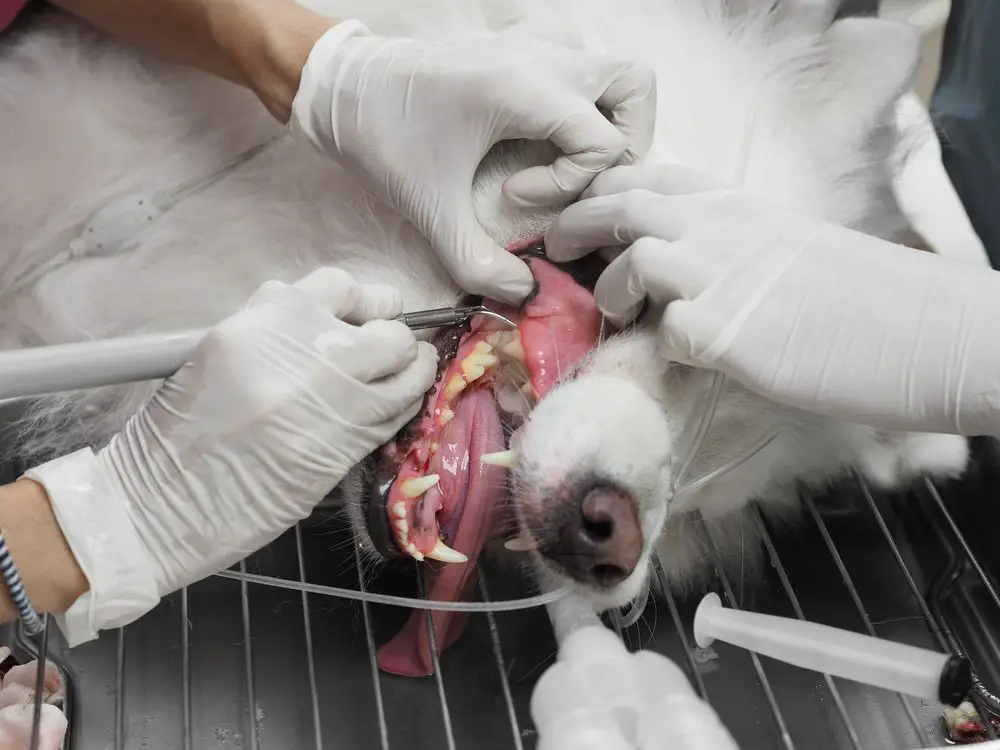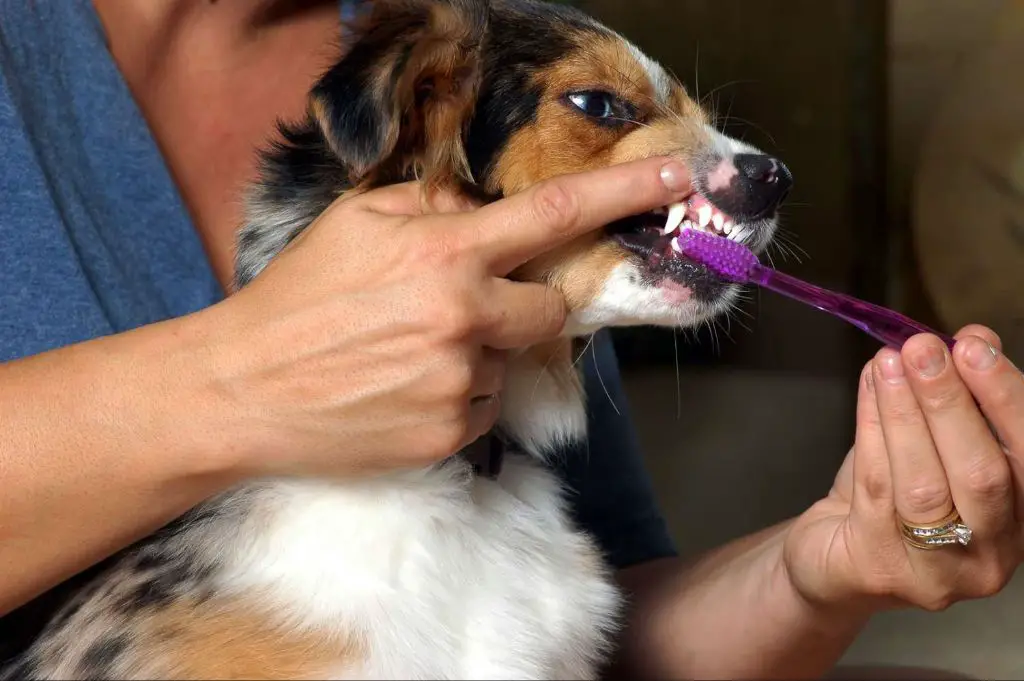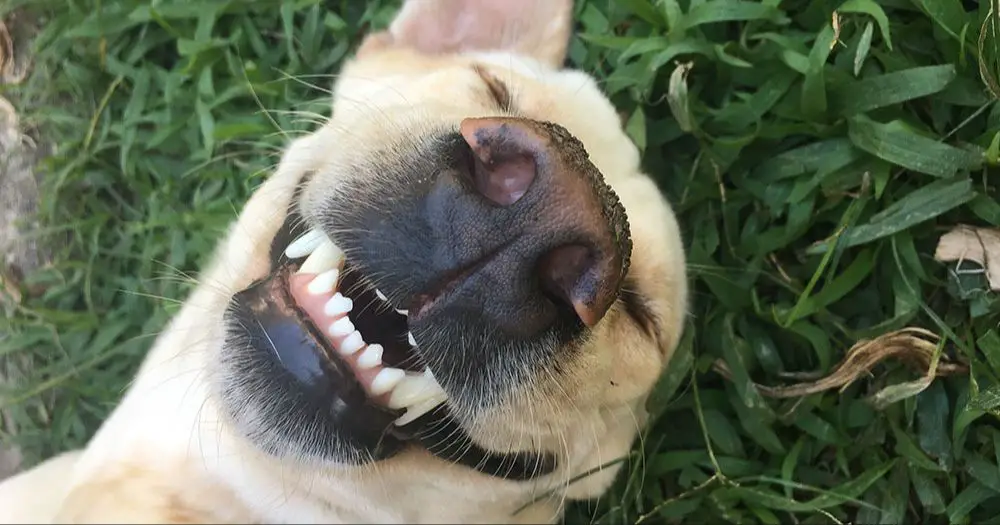Introduction
Oral health is just as important for dogs as it is for humans. In fact, by age 3, around 80% of dogs have some form of oral disease. Despite this, surveys show only about 5% of dog owners take their pooches to get a professional dental cleaning.
Poor dental care can lead to serious health issues in dogs, including tooth loss, infections, and damage to internal organs. But the good news is that with proper prevention and treatment, it’s possible to keep your dog’s teeth clean and healthy for years to come.
This article will cover everything you need to know about your dog’s dental health. You’ll learn about common issues, signs of problems, when to seek professional care, what the cleaning process entails, at-home maintenance, and preventing future disease. Let’s start by understanding why good oral hygiene really matters for your pup.
Why Dog Dental Health Matters
Proper dental care is just as important for dogs as it is for humans. In fact, poor dental health can lead to a number of serious health issues for dogs if left untreated. Here are some of the main reasons why maintaining good oral hygiene is essential for your canine companion:
Dental disease is painful. If plaque and tartar are allowed to build up on a dog’s teeth, it can lead to inflamed gums, infections, and tooth decay. This can cause a lot of pain and discomfort for dogs while eating and chewing. Keeping the teeth clean prevents this pain.
Bacteria from dental infections can spread through the body. When bacteria collects in a dog’s mouth from plaque and tartar buildup, it can enter the bloodstream if there are any injuries or bleeding in the gums. This allows the bacteria to travel to other areas of the body, potentially causing damage to organs like the heart, liver and kidneys.
It facilitates early detection of other health issues. Vets can detect signs of disease during dental exams that may not otherwise be caught through routine physicals. These include diabetes, kidney disease, cancer and more. Catching problems early on gives dogs the best chance of successful treatment.
Poor dental health shortens lifespan. Studies show that dogs with advanced dental disease live on average 2-3 years less than dogs with healthy teeth and gums. Proper oral hygiene helps prevent life-threatening conditions.
In summary, neglecting a dog’s dental care can allow preventable health problems to take hold. By being diligent about brushing, dental cleanings and checkups, owners can ensure their furry companions enjoy the highest quality of life for years to come.
Common Dog Dental Issues
Dog dental disease is very common despite it being mostly avoidable with proper care. There are two main types of dog dental conditions to be aware of: periodontal disease and tooth decay.

Periodontal disease affects the tissues around the tooth. It starts with plaque, a sticky film that forms on the teeth from food particles and bacteria in the mouth. If plaque is allowed to build up, it hardens into tartar and begins to irritate the gums. This leads to inflammation called gingivitis. As the disease progresses, the gums recede from the teeth, pockets form, and the roots become exposed. Bacteria collect in these pockets and spread infection throughout the mouth and even the bloodstream.
Tooth decay is another common issue. It occurs when plaque bacteria generate acids that erode and break down the enamel. This can lead to infection and abscesses within the tooth. Decay often starts at the gum line and causes gum recession. If left untreated, the decay will continue into the deeper structures of the tooth.
Other dental problems dogs may experience include fractured or chipped teeth, malocclusion (misaligned bite), and oral tumors. Any dental abnormalities can be painful and compromise a dog’s ability to eat.
That’s why it’s critical to take care of a dog’s teeth and mouth. Stopping disease early with cleanings and dental care can prevent progression and more invasive treatments down the road.
Signs of Dental Problems in Dogs
There are several signs indicating your dog may have a dental health issue that requires attention:
-
Bad Breath – Persistent bad breath or halitosis is one of the most common signs of a dental problem in dogs. Bacteria in the mouth and plaque buildup causes a bad odor.
-
Discolored Teeth – If you notice yellow, brown or other discoloration on your dog’s teeth, it likely indicates tartar buildup and the need for a cleaning.
-
Bleeding Gums – Inflamed, red or bleeding gums when brushing your dog’s teeth often signals gingivitis or periodontal disease.
-
Loose Teeth – Advanced dental disease can cause teeth to become loose or even fall out. This requires immediate veterinary attention.
-
Reduced Appetite – Dental pain can make chewing difficult or uncomfortable, causing a dog to stop eating as usual.
-
Swollen Face – Significant dental infections may cause facial swelling and abscesses.
Take note if you see any of these common signs of dental disease in your dog. Consulting your veterinarian is advised to get a professional diagnosis and treatment.
When to Get Your Dog’s Teeth Cleaned
Most vets recommend an annual professional dental cleaning for dogs starting around the age of 3. While puppy teeth and gums are healthy, plaque and tartar buildup becomes more of an issue as a dog ages. By the time a dog is 3 years old, there is likely accumulated tartar on the teeth that requires more than just brushing to address. An annual cleaning around this age helps to get ahead of dental disease and prevents more severe issues down the road.
During a professional cleaning, the veterinarian will scale and polish each tooth, down to below the gumline where plaque hides. This gets rid of mineral buildup and tartar that simple brushing can’t address. Having this full dental cleaning done yearly removes any accumulated tartar since the last visit, and helps keep your dog’s teeth and gums as healthy as possible.
Some signs that it’s time for your adult dog’s annual dental cleaning include: bad breath, inflamed gums, yellow-brown tartar buildup on teeth, reduced appetite or difficulty eating. Schedule an exam if you notice any of these issues, and your vet can assess if a dental cleaning is due. While the cleaning itself may seem expensive, it is much less costly than emergency dental surgery if advanced dental disease takes hold.
Professional Dog Dental Cleaning Process
When you bring your dog to the vet for a professional dental cleaning, here’s an overview of what you can expect:

Pre-anesthetic examination: The vet will do a full physical exam, ask about your dog’s medical history, and may run bloodwork or other tests to ensure your dog is healthy enough for anesthesia.
Anesthesia: Your dog will be given an IV injection of anesthesia to fully sedate them for the duration of the cleaning. This ensures they don’t feel any pain or discomfort.
Intubation: Your dog will be intubated with an endotracheal tube to ensure their airway stays open and clear during the procedure.
Scaling: A dental scaler tool will be used to remove tartar and plaque from above and below the gumline. This gets rid of any buildup and infection.
Polishing: The teeth are polished smooth after scaling to remove any leftover debris and microscratches that can harbor bacteria.
Fluoride treatment: A fluoride gel or foam is applied to help strengthen enamel and prevent future plaque buildup.
Extractions: If any teeth are severely damaged or infected, they may need to be extracted.
Once the cleaning is complete, your dog will be monitored closely until fully recovered from anesthesia. The vet will also go over recommended at-home dental care to keep your dog’s teeth healthy moving forward.
Aftercare for Dog Dental Cleanings
After your dog undergoes a professional dental cleaning, there are some things you can do at home to help maintain their dental health. Here are some tips for caring for your dog’s teeth after a cleaning:
Brush their teeth daily– Just like after a human dental cleaning, it’s important to keep up with brushing at home. Brush your dog’s teeth daily with a soft toothbrush and dog toothpaste to prevent new plaque and tartar buildup.
Feed dental diet foods – There are specialty dog foods formulated to clean teeth and prevent tartar as your dog chews. Feeding kibble or treats made for dental health can prolong the effects of the professional cleaning.
Use oral rinses – Dog oral rinses with antiseptic ingredients can be applied after brushing to kill bacteria. These oral rinses help reduce plaque and freshen dog breath.
Avoid hard chews and toys – Hard chews and toys can damage teeth right after a dental cleaning while they are still sensitive. Stick to softer toys and chews for a few weeks.
Watch for bleeding or changes – If you notice bleeding from the gums, bad breath, or other dental changes after the cleaning, contact your vet.
Following up a professional dental cleaning with diligent at-home care can help dogs better maintain their fresh, clean teeth and healthier gums.
At-Home Dog Dental Care
Even with professional cleanings, daily at-home dental care is important for your dog’s oral health. Here are some tips to keep your dog’s teeth clean at home:
- Brush your dog’s teeth daily if possible. Use a soft bristle toothbrush and dog-safe toothpaste. Brush in gentle circles on the outer surfaces of the teeth.
- Offer dental chews and treats. Look for products with the VOHC seal that actively fight plaque and tartar.
- Use dental rinses and gels. These provide extra fluoride and enzymes between brushings.
- Try dental diets and chews. Some kibbles are designed to mechanically scrub teeth.
- Play fetch with dental toys. The scrubbing motion cleans teeth while your dog plays.
- Avoid chew toys that are too hard. They can lead to cracked teeth if your dog is an aggressive chewer.

Daily dental care at home, along with regular professional cleanings as needed, will help ensure your dog’s teeth stay clean and plaque-free.
Preventing Future Dog Dental Issues
There are several ways pet owners can help prevent future dental problems for their dogs:
- Brush your dog’s teeth daily. Dog toothbrushing is the most effective way to reduce plaque buildup and prevent tartar formation.
- Provide dental chews and treats. Look for products with the VOHC seal that actively fight plaque and tartar.
- Feed kibble instead of wet food. The crunchy texture helps scrape away plaque naturally.
- Schedule annual veterinary dental cleanings. Even with diligent at-home care, yearly professional cleanings are recommended.
- Avoid sharing utensils with your dog. Human saliva can transmit bacteria to your dog’s mouth.
- Add dental rinses or solutions to your dog’s water. These can reduce bacteria in the mouth.
- Monitor your dog’s oral health routinely. Check for signs of gum disease, tooth fractures, or abnormal wear.
With proactive home dental care and professional veterinary cleanings, you can help ensure your dog maintains healthy teeth and gums for years to come.
Conclusion

Proper dental care is essential for your dog’s health and wellbeing. Poor dental health can lead to serious medical issues if left untreated. While daily tooth brushing and dental chews can help maintain your dog’s teeth, most dogs will need professional cleanings to fully remove plaque and tartar buildup.
Veterinary dental cleanings allow for a deep cleaning above and below the gumline that isn’t possible at home. It also enables dental x-rays to check for hidden problems. The cleaning process is thorough but safe. Aftercare may involve antibiotics and a special diet to aid healing. With proper prevention care at home, professional dental cleanings can help keep your dog’s mouth healthy and pain-free for years to come.
By understanding the importance of your dog’s dental health, getting regular professional cleanings, and maintaining at-home dental care, you can help your canine companion avoid dental disease. Keeping your dog’s teeth and gums healthy will go a long way toward supporting their comfort and longevity.